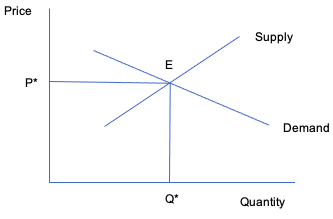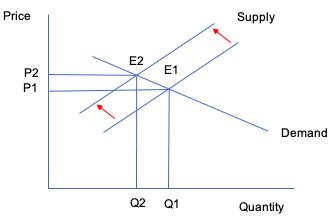How an equilibrium price is set in the supply and demand market
Many factors, among them price, population, and income, affect consumer demand for products and services sold in a market. Demand is satisfied either by local producers or importers. The demand curve is downward-sloping, which means that an inverse relationship exists between demand and price. The supply of products and services is also affected by various factors, including price, demand, and availability of resources. The supply curve is upward-sloping, indicating an inverse relationship between demand and price. Arguably, because of limited resources, it is not possible to fully satisfy the demand for products or services.
However, in economic terms, when the supply of a specific product or service completely fulfills its demand, an equilibrium level is achieved (Mankiw, 2016). To be specific, the equilibrium level is reached when the demand for a product or service is equal to its supply at a specific price. Figure 1 graphically represents this concept.

How a reduction in oil production will affect the supply and demand curve
As shown, the equilibrium level E is achieved at the point where demand is equal to supply. However, changes in the factors that affect demand or supply can alter this equilibrium level, and the market will react and find a new level. This phenomenon can be exemplified in terms of a decrease in oil production. A reduction in oil production will shift the supply inward on the graph. However, as Figure 2 shows, no shift in the demand curve is evident.

Thus, it is clear that the previous equilibrium level will no longer be suitable for the market when oil production decreases. The inward shift of the supply curve will force the market to locate a new equilibrium level at a new price level, P2, and quantity level, Q2. In this situation, the price of oil will be higher than before. The suppliers will achieve higher total revenue by charging a higher price for the oil demanded by the market. On the other hand, the quantity demanded and supplied will be less (Arnold, 2015).
Conclusion
The market always strives to find an equilibrium between the demand and the supply of products and services. However, market dynamics are continuously changing, which makes finding equilibrium a challenging process.
References
Arnold, R. A. (2015). Economics (12th ed). Mason, OH: Cengage Learning.
Mankiw, N. G. (2016). Principles of microeconomics (8th ed.). Mason, OH: Cengage Learning.